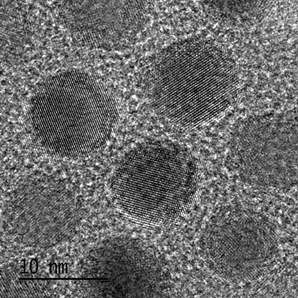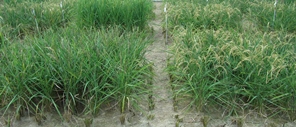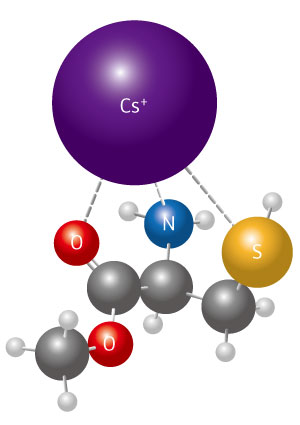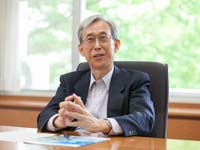Jun. 30, 2017 Perspectives Biology
Nature’s genius aids sustainability science
RIKEN CSRS contributes to Japan's sustainability efforts by better understanding nature's cycles and creating greener solutions to the world's environmental issues
 The 17 Sustainable Developments Goals represent the global effort to eradicate extreme poverty, tackle climate change and preserve the environment. They were agreed in September 2015, when 193 world leaders met at a UN summit in New York.
The 17 Sustainable Developments Goals represent the global effort to eradicate extreme poverty, tackle climate change and preserve the environment. They were agreed in September 2015, when 193 world leaders met at a UN summit in New York.
Life on Earth is driven by a myriad of fascinating processes, which are under greater environmental pressure than ever before. Scientists at the RIKEN Center for Sustainable Resource Science (CSRS) are seeking to contribute to Japan’s sustainability efforts by better understanding nature’s cycles and using the knowledge to create greener solutions to the world’s environmental issues.
In 2015, two historic proposals—the Paris Agreement on global warming (COP21) and the United Nations 2030 Agenda for Sustainable Development—were supported by more than 190 countries. Japan promised to work on realizing the Agenda’s 17 sustainable development goals (SDGs) and to move toward a 26 per cent reduction of greenhouse gases from 2013 levels by 2030.
Led by Director Kazuo Shinozaki, CSRS researchers are addressing these goals through exploring the potential of biological compounds, microorganisms and plants, and the processes at which nature excels. Its experts in plant science, chemical biology and catalytic chemistry are seeking innovative and biologically inspired technological solutions that have minimal impact on the environment. “The SDGs are vital for the well-being of future generations,” says Shinozaki. “Scientists should think about their potential to contribute to achieving them.”
Toward the United Nation’s sustainable development goals
 Manganase oxide nanoparticles catalyze efficient water split.
Manganase oxide nanoparticles catalyze efficient water split.
Tackling greenhouse gases: Photosynthesis in the lab
Carbon dioxide (CO2), the most significant greenhouse gas, is being generated at worrying levels. Plants and some microorganisms reduce the amount of CO2 in the atmosphere through photosynthesis. Currently, CSRS researchers are investigating the possibility of enhancing plant uptake of CO2 and ways to realize artificial photosynthesis as a means to reduce greenhouse gases and to harness its energy-creating potential.
One of the first steps of photosynthesis is splitting water into hydrogen and oxygen, a major hurdle in an artificial setting. Plants and microorganisms accomplish this with low energy input and a neutral pH, whereas artificial photosynthesis typically requires high energy input and pH, which is expensive. However, in 2016 a key CSRS finding by Ryuhei Nakamura’s Biofunctional Catalyst Research Team revealed that splitting water in the presence of manganese oxide nanoparticles is more efficient than using bulk manganese oxide, moving scientists one step closer toward harnessing this process for green energy and using hydrogen as a low-carbon fuel.1
 Overexpression of an Arabidopsis galactinol synthase gene improves drought tolerance in transgenic upland rice and increased grain yield in dry fields in South America.
Overexpression of an Arabidopsis galactinol synthase gene improves drought tolerance in transgenic upland rice and increased grain yield in dry fields in South America.
Zero hunger: Resilient crops
Global warming is causing droughts and environmental stresses that reduce crop yields. As a result, the CSRS is working on creating plants that can grow in tough conditions and with limited nutrients and fertilizers. “By studying plants’ immunity, genes, and metabolic pathways, we can breed plants that are resistant to diseases and tolerant to environmental stresses such as drought, high salinity, soil erosion and pollutants,” Shinozaki explains.
During drought, plants tend to accumulate molecules such as metabolite galactinol,which can protect their cells from the effects of a lack of water. Shinozaki’s Gene Discovery Research Group has increased rice drought tolerance by introducing a gene responsible for synthesizing galactinol from Arabidopsis into rice, producing plants that accumulate more than 70 times the usual amount of the metabolite2. This rice was recently tested in Colombia in collaboration with the International Center for Tropical Agriculture (CIAT) and showed a higher yield under dry conditions. It will soon be trialed in Africa and other parts of South America.
CSRS researchers are also exploring ways to reduce the use of nitrogen fertilizers, which are applied to crop topsoil. Excess nitrogen fertilizers make their ways into waterways, causing algal blooms and unnatural plant growth, and stimulate soil microbes to convert nitrogen to nitrous oxide, another potent greenhouse gas. Common crop staples, such as rice and wheat, need a lot of fertilizer, but some soil bacteria have an enzyme that can convert the abundant nitrogen in the atmosphere into ammonia—a form of nitrogen that plants can use. These soil bacteria naturally have a symbiotic relationship with legumes, but Makoto Hayashi’s Plant Symbiosis Research Team is looking at introducing nitrogen-fixing bacterium rhizobium into other staple crops, which would dramatically cut the use of nitrogen fertilizers.
Good health and well-being: Aging, new drugs and the deep seas
To look into the aging aspect of health and well-being, the CSRS, in collaboration with other RIKEN centers, has launched an interdisciplinary project to study how immunity, brain, nervous system and metabolic functions change during aging. Minoru Yoshida’s Chemical Genomics Research Group, Hiroyuki Osada’s Chemical Biology Research Group and Mikiko Sodeoka’s Catalysis and Integrated Research Group are screening libraries of chemical products synthesized or collected from microorganisms, plants and animals, in the hope of finding new drugs, antibiotics and other compounds essential for human health. Furthermore, Jun Kikuchi’s Environmental Metabolic Analysis Research Team is collaborating with the Japan Agency for Marine-Earth Science and Technology (JAMSTEC) to search for deep-sea microorganisms that may reveal valuable new molecules. “Our genetic analysis of samples collected by JAMSTEC scientists could lead to the discovery of useful deep-sea dwelling microorganisms, whose diversity and properties have yet to be explored,” notes Shinozaki.
Affordable and clean energy: Planes powered by algae
CSRS is also taking part in the race to find alternatives to fossil fuels. Cultured algae may help create the jet fuels of the future. In collaboration with biofuel and research company euglena Co., Ltd, CSRS is analyzing how the metabolic pathways of the microalgae Euglena could increase biofuel yields for the aviation industry. “Algae can grow faster than other plants and produce more oil than rapeseed. For this reason, Keiichi Mochida’s Cellulose Production Research Team and Kikuchi’s team are analyzing Euglena ’s metabolites to boost the key metabolic pathways that will increase oil yield,” explains Shinozaki.
Responsible consumption and production: More bioplastic, less ammonia
Keiji Numata’s Enzyme Research Team is working on a biodegradable plastic known as polyhydroxyalkanoate (PHA), which is produced by bacteria that feed on lignin, a major component of wood. CSRS is also working with marine photosynthetic bacteria to synthesize PHA from CO2 in seawater. The biodegradable plastic could be employed as plastic mulch, covering the soil around agricultural crops to help retain moisture and improve soil health as well as increase the soil temperature during seed germination. Their techniques are being developed with the Kaneka Corporation.
Another huge issue CSRS scientists are tackling is the fossil fuel–heavy production of ammonia, the main ingredient in crop fertilizers. Ammonia is currently manufactured at high temperatures and pressures, in a process estimated to account for more than 1 per cent of global energy consumption. CSRS researchers are investigating new means to help plants absorb nitrogen and reduce fertilizer use. Moreover, Zhaomin Hou’s Advanced Catalysis Research Group has recently managed to partially bypass the need for ammonia by making important chemical compounds called nitriles directly from nitrogen3.
 An amino acid derivative L-methyl cysteinate promotes cesium accumulation in plants, which may have a potential for more efficient decontamination of cesium in farmlands.
An amino acid derivative L-methyl cysteinate promotes cesium accumulation in plants, which may have a potential for more efficient decontamination of cesium in farmlands.
Life below water: Healthy fishes in clean oceans
A CSRS project is looking at removing heavy-metal pollutants such as mercury from contaminated water via bioremediation—the use of naturally occurring organisms to neutralize pollutants at contaminated sites. Hitoshi Sakakibara’s Plant Productivity Systems Research Group and Misao Itouga are exploring how contaminated sites can be treated using mosses and other plants that are able to live on pollutants. Kikuchi’s team also began a project with the Fishery Research Agency to study how the metabolites and gut bacteria of farmed tunas and eels change depending on the fishes’ diet and its health conditions.
Similar bioremediation technologies as above are also being applied to protect land-dwelling creatures. Recently, Ryoung Shin’s Regulatory Network Research Unit found a chemical compound that promotes radioactive cesium accumulation in Arabidopsis plants4. This may be useful for rehabilitating land contaminated after nuclear disasters such as Fukushima. Sakakibara’s group and Itouga are also working in collaboration with recycling-oriented company DOWA HOLDINGS CO., LTD to promote the recovery of useful material sources from the soil using plants and microorganisms. In particular, CSRS researchers are studying methods to recover rare and heavy metals, like gold and platinum, using mosses. In addition, Ken Shirasu’s Plant Immunity Research Group and Hayashi's team are working with farmers to better understand how soil bacteria, fix nitrogen and help plants fight diseases.
Looking ahead
The success of the Agenda depends on co-operation between governments, the private sector and civil society. CSRS is collaborating with more than 30 companies, over 20 research institutes and universities worldwide, and several Japanese government research institutes. It’s a CSRS strength, says Shinozaki, who emphasizes that they “stress the importance of local and international collaborations to achieve real applications of basic knowledge.”
Next year, the CSRS will begin its second phase and focus on employing all available technologies in chemistry, genomics and big data toward its ends. Furthermore, in collaboration with the recently established RIKEN Center for Advanced Intelligence Project, the CSRS will look into using big data science and artificial intelligence to enhance agricultural planning and the design of high-performance chemical reactions.
References
- 1. Jin, K., Seo, H., Hayashi, T., Balamurugan, M., Jeong, D., Go, Y. K., Hong, J. S., Cho, K. H., Kakizaki, H., Bonnet-Mercier, N. et al. Mechanistic investigation of water oxidation catalyzed by uniform, assembled MnO nanoparticles. Journal of the American Chemical Society 139, 2277–2285 (2017). doi: 10.1021/jacs.6b10657
- 2. Selvaraj, M. G., Ishizaki, T., Valencia, M., Ogawa, S., Dedicova, B., Ogata, T., Yoshiwara, K., Maruyama, K., Kusano, M., Saito, K. et al. Overexpression of an Arabidopsis thaliana galactinol synthase gene improves drought tolerance in transgenic rice and increased grain yield in the field. Plant Biotechnology Journal advance online publication, May 2017 doi: 10.1111/pbi.12731
- 3. Guru, M. M., Shima, T., & Hou, Z. Conversion of dinitrogen to nitriles at a multinuclear titanium framework. Angewandte Chemie, 128(40), 12504-12508 (2016). doi: 10.1002/ange.201607426
- 4. Adams, E., Miyazaki, T., Hayaishi-Satoh, A., Han, M., Kusano, M., Khandelia, H., Saito, K., & Shin, R. A novel role for methyl cysteinate, a cysteine derivative, in cesium accumulation in Arabidopsis thaliana. Scientific Reports 7, 43170 (2017). doi: 10.1038/srep43170
About the Researcher
Kazuo Shinozaki

Since joining RIKEN as a chief scientist in 1989, Kazuo Shinozaki has conducted research into molecular biology and functional genomics, with specific emphasis on plant response and tolerance to environmental stresses. More recently, his interests have focused on the application of basic research to the sustainable production of food, biomass and energy as the CSRS director. He is one of the world's most highly cited researchers in plant sciences.
